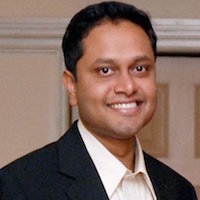
Antennas have become such an integral part of our lives that we don't even notice them anymore. They have blended into the background in every aspect of our lives; our phones, cars, and even our clothing. With so many antennas around, designing them is proving to be a greater challenge than ever. Engineers have to work with tiny form factors, limited power, and endless variation. Then there's the problem of interference. The multitude of antennas on these devices causes a cacophony that engineers need to make sense of.
These days engineers rely on software tools to help with design. Software is a fast, inexpensive way to explore designs before building anything. And CST software has been helping engineers design better antennas for decades.
CST Antenna Design Workshop
CST recently hosted an Antenna Design workshop in Santa Clara featuring a stellar line up of speakers. The workshop kicked off with a fantastic keynote by CST's VP of Engineering Dr. David Johns. Dr. Johns discussed the evolution of analytical methods to model wave propagation. He started at the beginning with analytical solutions based on Maxwell's equations. Those analytical solutions were soon found to be too limiting to capture the real world. That led to the development of of numerical techniques and a range of solvers to suit a variety of antennas. CST pioneered a new time domain solver call Finite Integration Technique which was the basis for their product suite.
Despite the availability of so many solver options, engineers are often limited by their hardware. They choose a solver based on the size of the hardware on their desk, instead of the most suitable one. Dr. Johns talked about the huge advances in hardware technology over the last decade. CPUs that have gotten better in every dimension: form factor, size, speed and more. And now with GPUs becoming prevalent, the possibilities are limitless. All this hardware is now available to engineers in the form of cloud computing. Incidentally, CST's transient FIT solver scales very well with more hardware. There's more information about how to use CST Cloud on CST's partner page
The opportunity for an engineer is that cloud computing can finally enable them to use the best tools for the job.


